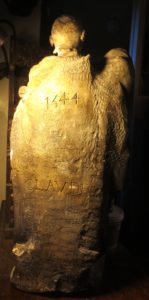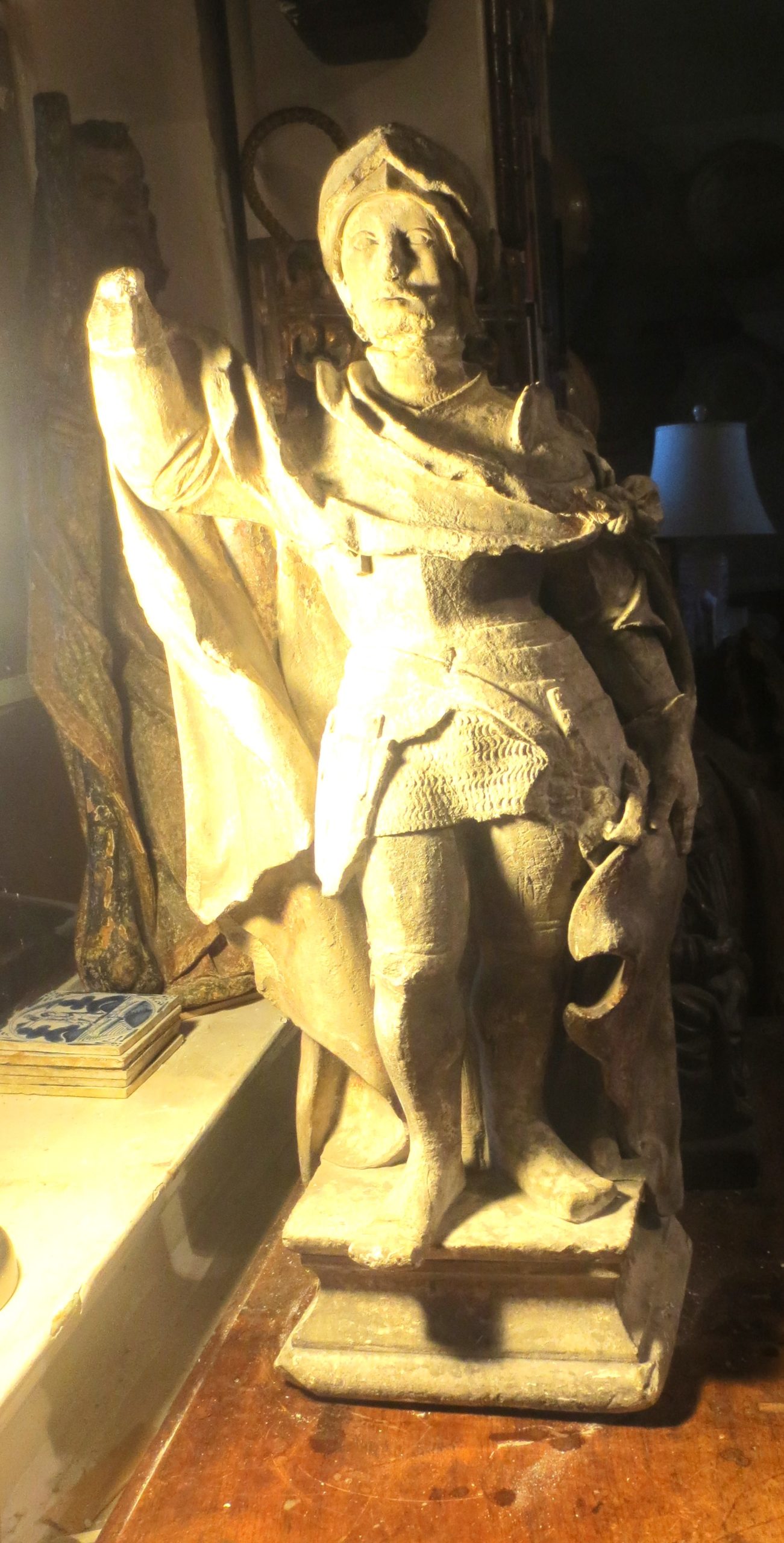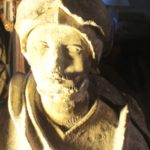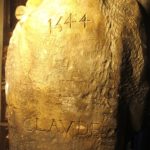Although in fairly good general surface condition, there are several damages to be noted: the tip of the soldier’s nose, his right hand and a few drapery ridges of his garment are gone, and an earlier attempt at restoration managed only to reconnect the loosened head to the torso and fill smaller lacunae with plaster which has since been removed to better retain the integrity of preserved forms.
Scant modern information about this sculpture for whom no established or conjectural oeuvre seems to be known, was first given Alexandre Assier, Les arts et les artistes dans l’ancienne capitale de la Champagne, 1250-1680, Aubry,1876, p.142, who simply noted that a Claude ‘L’Imagier’ was working in Troyes between 1526 and 1533 and apparently made several statues or keystone figures for the Toussaint chapel at Saint-Nicolas, none of which were connected to the work of any of the named ‘imagiers’ cited by Assier and repeated by Koechlin below.
Assier’s antiquarian note remained the sum of information about Claude as cited from Assier in Raymond Koechlin et Marquet de Vasselot, La Sculpture a Troyes et dans la Champagne Méridionale au Seizième Siècle, Paris, 1900, p.177, which was again repeated in a brief entry s.v. ’Claude’ in Thieme-Becker, Allgemeines Lexikon der bildenden Künstler, Leipzig, Vol. VII (ca. 1910), p. 58 which simply repeated Assier’s antiquarian gleaning without citation of the reference to the equally brief reference to Claude by Koechlin and Vasselot.

The present statue first came to some light by 1990 when it was purchased from a local antique shop without further provenance by an amateur medievalist. Upon recent examination, both the signature inscription of the sculptor’s name and the date 1544 opened an unexpected sesame to the biography and identifiable oeuvre of this artist whose working span was now extended over a decade longer than first considered.
Although older photographs of the statue in modern situ are less than perfect and need to be replaced in due time, the discovery of a signed and dated work connected to a major circle of transitional late Gothic to Early Renaissance sculpture in Champagne warrants the pro temp illustration of the work as a sesame to potential attributions to this hand of some of the many anonymous works at Saint Nicolas in Troyes and other neighboring sites.



